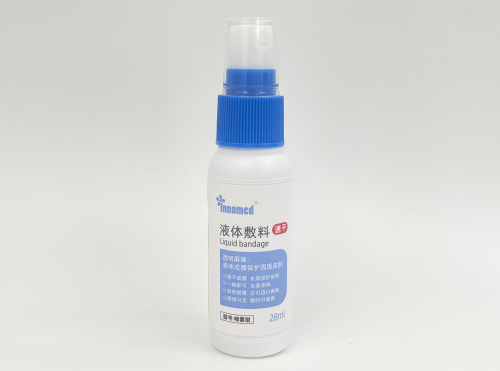Pediatric enterostomy is a common surgical procedure that can help treat a variety of bowel conditions. However, the postoperative completely changed the original normal defecation mode of the child, and the feces were discharged involuntarily. In addition, the digestive juice in the intestinal leakage from the fistula is corrosive, which easily infiltrates the abdominal skin, and often occurs around the stoma. Skin edema, necrosis, and other complications. Liquid dressing therapy is an effective way to help protect the skin around an enterostomy and reduce pain and inflammation.
What is Pediatric Enterostomy?
Pediatric enterostomy is a surgical treatment that can help treat a variety of bowel conditions. This surgery usually creates a temporary or long-term opening in a child's bowel so that food and fluids can pass through while allowing waste to pass from the body. Enterostomy surgery can be used to treat congenital intestinal malformations, intestinal infections, intestinal obstruction, and other diseases.
Why is liquid dressing therapy necessary?
After pediatric enterostomy surgery, the skin around the enterostomy requires special protection and treatment. Since the skin around an enterostomy is often affected by discharge and friction, it is prone to inflammation and pain. If the skin is damaged or infected, the infection may spread and, in severe cases, the surgery may fail.
Liquid dressing therapy can help reduce inflammation and pain in the skin around the stoma. Liquid dressings absorb sweat and waste around the skin, keeping the skin clean and dry. In addition, liquid dressings can provide additional protection and moisture, reducing friction and damage to the skin.
Advantages of using it in children:
The liquid dressing is a polymer solution, which can form a thin film on the skin's surface to avoid the strong stimulation of the secretion on the skin. Applying the liquid dressing evenly on the stoma can gradually decompose it into a non-cytotoxic and non-irritating solvent, which also has anti-friction and waterproof function, oxygen can penetrate under the membrane of the ostomy bag, and carbon dioxide and water under the membrane can also be fully volatilized, thereby protecting the skin of the perineum; combined use of ostomy care powder and liquid dressings can reduce irritation caused by frequent washing Mechanical stimulation can effectively reduce the pain of children and promote the rapid healing of skin lesions.
The specific use of liquid dressing therapy is as follows:
Washing: The skin around the enterostomy should be washed prior to treatment with a liquid dressing. Can be washed with warm water and a mild detergent, then gently dried with a clean towel.
Disinfection: After cleaning, the skin around the stoma should be disinfected. The area can be sprayed or smeared with rubbing alcohol or povidone-iodine.
Applying the liquid dressing: Apply the liquid dressing to the skin around the stoma and massage gently with your fingers to penetrate.
Immobilization: The dressing is applied to the skin and secured with tape or splints.
Conclusion :
Liquid dressing therapy is an effective way to help protect the skin around a pediatric enterostomy stoma and reduce pain and inflammation. Specifically, liquid dressing treatments can work by keeping the skin clean and dry, providing extra protection and moisturizing, and reducing pain and inflammation, among other things. In conclusion, liquid dressing therapy is an important tool that should be utilized in the management of pediatric enterostomy surgery.
For more information on Innomed® Liquid bandage, refer to the previous articles. If you have customized needs, you are welcome to contact us; we will serve you wholeheartedly. At Longterm Medical, we transform this data by innovating and developing products that make life easier for those who need loving care.
Editor: kiki Jia
Date: May 8, 2023

 English
English عربى
عربى Español
Español русский
русский 中文简体
中文简体








